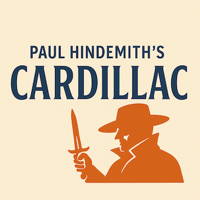
Overview
Synopsis
In Paul Hindemith’s opera Cardillac, the story unfolds in 17th-century Paris, where the city is gripped by a series of mysterious murders. The victims all share one thing in common—they were recent purchasers of jewelry crafted by the master goldsmith Cardillac. Obsessed with his creations and unable to part with them, Cardillac secretly kills his customers to reclaim his treasured works. When his daughter’s lover becomes his next intended victim, Cardillac’s crimes are finally exposed. Confronted by the outraged public, he confesses without remorse and is slain by the mob, leaving behind a chilling meditation on the destructive power of artistic obsession and the blurred boundary between creator and creation.
Show Information
Context
Paul Hindemith’s Cardillac, composed in 1926 and premiered in Dresden in 1927, is one of the composer’s most striking examples of early 20th-century German Expressionist opera. Based on E.T.A. Hoffmann’s short story* Das Fräulein von Scuderi,* the work explores the tension between art, morality, and madness—a recurring preoccupation in post–World War I Europe. Hindemith’s adaptation transforms Hoffmann’s Gothic tale into a modern allegory about artistic obsession and the dehumanizing effects
to read the context for Cardillac and to unlock other amazing theatre resources!Plot
Characters
| Name | Part Size | Gender | Vocal Part |
|---|---|---|---|
|
Lead |
Male |
Baritone, Bass |
|
|
Supporting |
Female |
Soprano |
|
|
Supporting |
Male |
Tenor |
|
|
Featured |
Female |
Soprano, Mezzo-Soprano |
|
|
Featured |
Male |
Baritone, Bass |
|
|
Featured |
Male |
Bass |
|
|
Featured |
Male |
Bass |
|
|
Ensemble |
Not Specified |
|
Songs
A song with an asterisk (*) before the title indicates a dance number; a character listed in a song with an asterisk (*) by the character's name indicates that the character exclusively serves as a dancer in this song, which is sung by other characters.
Monologues
Scenes
Key Terms
Atonality refers to music that lacks a fixed key or tonal center, rejecting the traditional hierarchy of pitches found in tonal music. It often creates feelings of tension, ambiguity, or psychological unease. Composers use atonality to expand expressive possibilities and break away from conventional harmonic expectations.
Catharsis is the emotional release experienced by the audience at the conclusion of a tragedy or intense dramatic work. It allows viewers to purge feelings of fear, pity, or tension through the resolution of the play’s conflict. The concept dates back to Aristotle, who believed catharsis was central to the purpose of theatre.
A theatrical style that distorts reality to convey inner emotional experience, popular in early 20th-century drama.
A recurring musical theme associated with a particular character, idea, or emotion. Frequently used in opera and musical theatre, leitmotifs help reinforce narrative continuity and emotional cues for the audience.
Mise-en-scène is a theatrical term describing the arrangement of everything visible on stage, including sets, lighting, costumes, and actor positioning. It shapes the visual atmosphere and emotional tone of a production. Directors use mise-en-scène to convey mood, symbolism, and relationships without relying solely on dialogue.
Videos
Sorry! We do not currently have videos for this guide.
Quizzes
Themes, Symbols & Motifs
At its core, Cardillac explores the destructive
to read about the themes, symbols and motifs from Cardillac and to unlock other amazing theatre resources!Quote Analysis
Sorry! We do not currently have learning modules for this guide.
